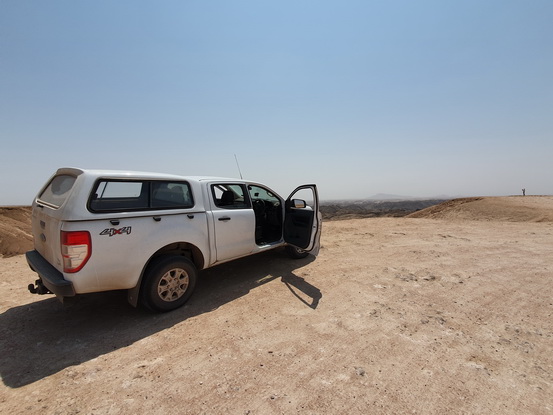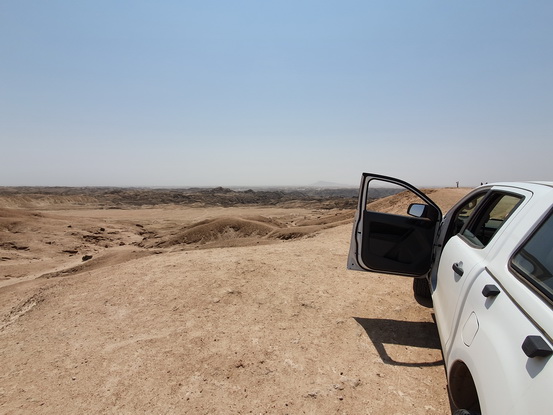| Moonvalley Old
Swakopriver
Exploring Namibia by 4x4 is one of the most
thrilling and rewarding ways to experience the country’s stunning
landscapes, from the towering dunes of the Namib Desert to the rugged
terrain of Damaraland. Here’s everything you need to know about 4x4
adventures in Namibia:
Why Go 4x4 in Namibia?
-
Access to Remote Areas:
-
A 4x4 vehicle allows you to explore Namibia’s most remote and
breathtaking locations, such as Sossusvlei, Fish
River Canyon, and Kaokoland.
-
Freedom and Flexibility:
-
Adventure:
-
Namibia’s diverse terrain, including deserts, mountains, and
savannahs, offers endless opportunities for off-road adventures.
Popular 4x4 Routes in Namibia
-
Sossusvlei and Namib-Naukluft Park:
-
Fish River Canyon:
-
Damaraland and Kaokoland:
-
Discover the rugged beauty of Damaraland, home to desert-adapted
elephants and ancient rock engravings.
-
Kaokoland offers remote and challenging routes, including the Van
Zyl’s Pass and the Himba villages.
-
Skeleton Coast:
-
Experience the eerie beauty of the Skeleton Coast, with its
shipwrecks, seal colonies, and dramatic landscapes.
-
Caprivi Strip:
Tips for 4x4 Travel in Namibia
-
Vehicle Preparation:
-
Ensure your 4x4 is in excellent condition, with proper tires,
spare parts, and recovery equipment.
-
Carry extra fuel, water, and supplies, as services can be scarce
in remote areas.
-
Navigation:
-
Driving Skills:
-
Familiarize yourself with off-road driving techniques, such as
sand driving, river crossings, and steep ascents/descents.
-
Drive cautiously and respect the environment.
-
Permits:
-
Camping:
Renting a 4x4 in Namibia
Safety Tips
-
Always inform someone of your travel plans and expected return time.
-
Be prepared for changing weather conditions, from extreme heat to
sudden rain.
-
Respect wildlife and keep a safe distance from animals.
|
Moonvalley Old Swakopriver
Exploring
Namibia by
4x4 is one of the best
ways to experience the country’s stunning landscapes, from the towering
dunes of the Namib Desert
to the rugged mountains and wildlife-rich savannas of the
Etosha National Park. A
4x4 vehicle allows you to access remote areas, off-the-beaten-path
destinations, and scenic locations that might be difficult to reach
otherwise.
Here are some key highlights and tips
for 4x4 travel in
Namibia:
Top 4x4 Routes and Destinations
in Namibia:
-
Sossusvlei & Deadvlei
(Namib Desert)
-
Location:
Namib-Naukluft National
Park
-
Why go: The
iconic red dunes
of Sossusvlei are a must-see in Namibia. A 4x4 vehicle is
essential to navigate the
sandy roads
leading to the dunes and
Deadvlei, where you’ll find
dead camel thorn trees
surrounded by dramatic desert landscapes.
-
4x4 Challenge:
The last stretch to Sossusvlei is on soft sand, so a
high-clearance 4x4
is recommended.
-
Skeleton Coast
-
Location:
Along the Atlantic coast of
northwestern Namibia
-
Why go: The
Skeleton Coast
is one of the most remote and eerie places in Namibia, known for
its shipwrecks, harsh landscapes, and
seal colonies.
You can access this area via 4x4 roads, especially through the
Skeleton Coast
National Park.
-
4x4 Challenge:
Sand dunes, tidal rivers, and rough tracks make it essential to
have a well-equipped
4x4 vehicle.
-
Damaraland
-
Location:
Central Namibia
-
Why go:
Damaraland is home to some of Namibia’s most striking
landscapes, including the
Brandberg Mountain
(home to ancient rock art),
Vingerklip (a
towering rock spire), and
desert-adapted
elephants.
4x4 vehicles allow you to explore the area’s rugged
roads and dirt tracks.
-
4x4 Challenge:
Driving can be challenging with
rocky terrain
and remote access, so a reliable 4x4 is recommended.
-
Etosha National Park
-
Location:
Northern Namibia
-
Why go:
Etosha is one
of Africa’s most famous wildlife parks, offering excellent game
viewing, especially around its
waterholes.
While Etosha has well-maintained gravel roads,
4x4 vehicles
provide greater access to remote parts of the park, including
private game reserves
that require 4x4 tracks.
-
4x4 Challenge:
While not particularly challenging, a 4x4 vehicle gives you more
freedom and access to less-crowded areas in the park.
-
Fish River Canyon
-
Location:
Southern Namibia
-
Why go: The
Fish River Canyon
is one of the largest canyons in the world, offering
breathtaking views. Driving a 4x4 gives you access to scenic
viewpoints and allows you to explore surrounding areas that are
harder to reach by conventional vehicles.
-
4x4 Challenge:
The terrain can be rugged, with gravel and rocky roads.
-
Kalahari Desert
-
Location:
Southeastern Namibia, near the border with South Africa
-
Why go: The
Kalahari Desert
is known for its vast dunes, sparse vegetation, and unique
wildlife. 4x4 vehicles are essential for exploring this arid
region, including visiting the
Kalahari Game Reserve
and interacting with the
San people.
-
4x4 Challenge:
Some areas may require
sand-driving skills, especially in soft sand
conditions.
-
Caprivi Strip (Zambezi
Region)
-
Location:
Northeastern Namibia
-
Why go: This
lush area is rich in wildlife and offers riverside landscapes
along the Zambezi,
Kwando, and
Chobe Rivers.
Many of the roads here are gravel or dirt, and a 4x4 is
necessary to access remote lodges and areas.
-
4x4 Challenge:
The region offers a mix of mud, dirt, and sand roads, making a
4x4 vehicle
the best option for off-road exploration.
Essential Tips for 4x4 Travel
in Namibia:
-
Vehicle Preparation:
- Ensure your 4x4 is in top
condition, with high
clearance and
off-road tires for navigating sand, mud, and rocky
tracks.
- It’s highly recommended to
have recovery gear
(e.g., tow ropes, sand mats, tire repair kits) and a
spare tire
for the challenging conditions.
-
Navigation:
-
GPS: Reliable
GPS systems
or offline maps
are essential as some areas in Namibia have little to no cell
phone reception.
-
Local Guides:
Consider hiring a
local guide for certain regions if you are unfamiliar
with off-road driving.
-
Driving Conditions:
-
Sand Driving:
In places like
Sossusvlei and the
Skeleton Coast,
driving in soft sand can be tricky. Keep tire pressure lower for
better traction and avoid sharp turns.
-
Rivers and Flooding:
Some areas, especially in the
Caprivi Strip
and near the Zambezi
River, may be subject to seasonal flooding. Always
check weather reports and local conditions before setting out.
-
Fuel and Supplies:
-
Fuel: Fill up
in larger towns or cities as fuel stations can be sparse in
remote areas.
-
Water: Always
carry sufficient water, especially when driving through arid
regions like the Namib
Desert or
Kalahari.
-
Food and First Aid:
Have emergency food and a first-aid kit in your 4x4, as
distances between services can be long.
-
Camping and Accommodation:
-
Camping:
Namibia is known for its
beautiful camping
spots, from desert camps to riverside locations. Many
national parks and game reserves offer
4x4 accessible camping
sites.
-
Lodges: For
those looking for a more comfortable stay, there are
luxury lodges
and campsites
that offer access to exclusive areas for 4x4 travelers.
-
Wildlife and Safety:
- When driving through
national parks or game reserves, always keep a
safe distance
from wildlife, especially larger animals like elephants and
lions.
-
Night driving
is not recommended in
wildlife areas due to the risk of encountering animals
on the road.
Conclusion:
Traveling through Namibia in a
4x4 vehicle offers an unforgettable adventure, allowing you to
experience some of the most stunning and remote landscapes on Earth.
Whether you’re tackling the vast
dunes of Sossusvlei,
exploring the wildlife-filled
Etosha National Park, or navigating the
rugged terrain of the Skeleton
Coast, a 4x4 is your ticket to accessing the wild beauty of
Namibia. Just make sure to plan ahead, ensure your vehicle is in top
condition, and always be prepared for the challenging conditions that
come with off-road travel!
|







